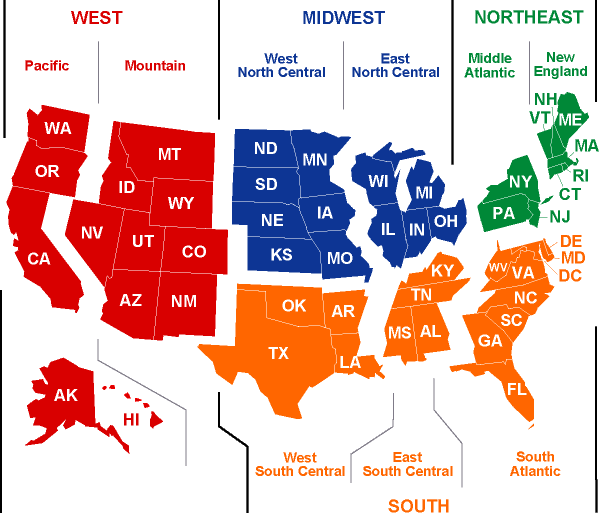Zillow, Not Just A Crazy Name, It’s A Crazy Way To Look At Home Prices
Besides Fundamental Analysis, the other major blunder is trying to use “median” home prices to forecast local real estate cycles.
It’s what everyone tries to use because those numbers are readily available, and free. It was the only game in town.
Median home prices produce absurd results and get exponentially worse with small markets and small time periods. (Tired of absurd investing?)
See the latest Real Estate Market Report here
In the same way that punching random numbers into a calculator will give you a meaningless outcome, the internet has spawned an entire industry, hundreds of websites that make a business out of regurgitating this same bad information.
You should beware: service providers themselves may not know, or care, how inaccurate their stuff really is. They just copy the next guy, and hey, if it’s good enough for Forbes, CNN and FiServ, what the hell…
You’ve seen those free and paid sites that supposedly calculate market trends – even down to the zip code level and from one week to the next?
Zillow®, Trulia® and eppraisal® are a few of the bigger free sites.
Some sites put a unique twist on that same information and charge a lot of money, starting around 100 bucks a month for a single county or a few zip codes.
They all basically rely on median home prices, so they’re ALL doomed from the start, but it gets worse…
Now they bastardize it even further by applying it to very small sample sizes – like the number of homes sold in a neighborhood or zip code, or in a particular week, or month.
Statistically speaking, that’s like taking a lie, wrapping it in a joke, surrounding it with a hoax and calling it a valuable service.
If you’re relying on that information, you’re making a terrible mistake.

In the free video training, you saw how median home prices don’t and can’t measure appreciation; they can only measure changes in the mix of homes sold….
Remember all those Realtors® slides showing home values appreciating and then depreciating at 30, 50 even 80% annual rates? …in a single quarter?
Like this one here for Chicago – See the red line, swinging widely up and down, compared to our steady blue line?
You tell me, do home prices in any market move in radical patterns like this? Rising and falling huge amounts every couple months? Or do they move up or down in a trend, like our blue line?
Can you use that red line as the basis for ANY prediction about where home prices are headed? Of course not. It’s like punching random numbers into a calculator and expecting meaningful answers.
And remember, Chicago has lots of home sale transactions. Bigger “sample sizes” are generally more stable than small ones.
What do you think happens when you use a failed method, like changes in Median Home Prices, and misapply it to an even smaller sample size, like zip codes, that have far fewer home sales?
Here’s what “median home prices” look like at the zip code level for my hometown, Ocala, Florida.

In this example, I’ve used Zillow only because everyone’s heard of them. There are tons of other websites that attempt to give you micro real estate trends. None of them work… their results are just as outrageous as this one.
According to Zillow, zip code 34476, the first one up at the top, saw a 9.2% decline in Month over Month (M-o-M) median home prices last month.
9.2% a month equals 110% a year – just multiply it by 12 months. In other words, homes in that zip code, right next to where I live, would be worthless in a year at this rate.
Now, compare that 110% decline to what was supposedly going on in the zip code right next to it – 34473. I live in this zip code… Zillow says homes are appreciating at a 79% annual rate.
Hmmm… home values two miles away are declining 110% while homes in my zip code are appreciating 79% ???
Does that make ANY sense to you?
Look at the next zip code: 34481. It’s showing an 83% annual APPRECIATION rate… but the zip code right next to it – with the same kinds of properties, is DECLINING at a 166% per year.

Here’s the map. See how these zip codes adjoin each other?
I know these markets inside out. They’re all the same types of properties and neighborhoods.
Contrary to what Zillow says, homes in these areas are absolutely, positively NOT declining at a 166% annual rate in one zone, appreciating 83% in the next, declining 110% in the next and increasing 79% in the next.
You don’t need a master’s in ‘statistics’ to know this ain’t right. If you know anything at all about real estate, then you know home prices don’t have wild 100% price swings up and down from one period to the next, or between one zip code and the next.
I can’t think of a single, intelligent use for this kind of information… but there are sites all over the internet giving it away, or selling it… and investors, realtors® and media companies quoting them as if it had some value or purpose.
Here’s the bottom line…
You can’t use median home prices to track or predict trends.
Period.
The smaller area you drill down into, be it zip code or neighborhood, the more ridiculous will be your results.
ANY real estate service that combines median home prices with small geographic areas or short time periods will generate the same kind of outrageous results you see here…
It’s an unavoidable and
unfixable “statistics” issue.
…and that’s precisely why I wrote this article, because if you can accurately identify local market cycles, and repeat the process all across the country, you can unlock 99.9999% of ALL real estate wealth.
It was never within reach, until now!
Step inside the modern
world of real estate investing.
Total Market Masters®





















